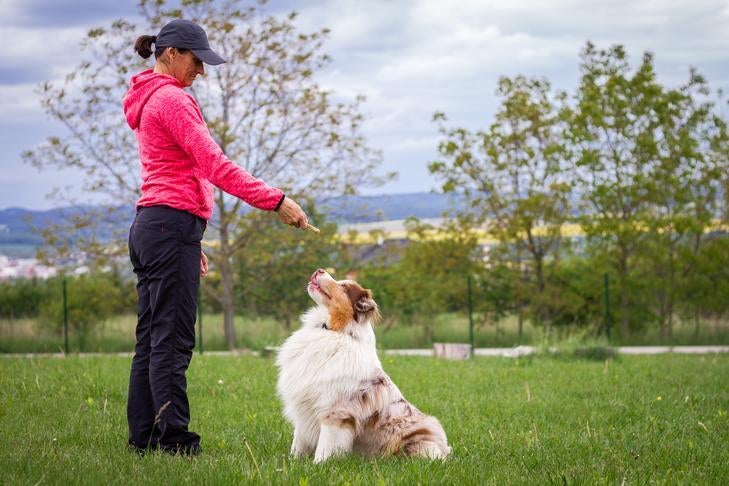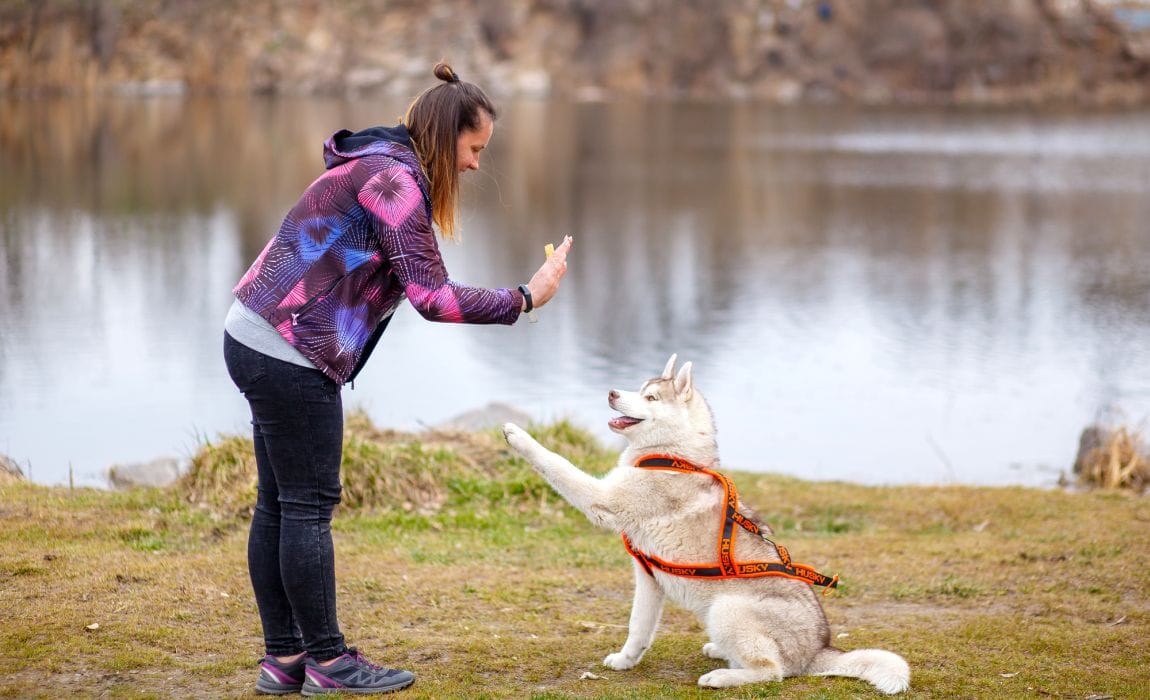Master Essential Commands: Efficient Dog Training Facilitated
Reliable pet training is an essential element of responsible animal possession, and understanding necessary commands acts as the foundation for an unified relationship between trainer and dog. Commands such as "Sit," "Stay," and "Come" not only help with communication yet additionally advertise a much safer setting. Using positive support strategies can enhance the knowing experience, yet lots of deal with challenges in attaining consistent results. Understanding the subtleties of canine behavior and the training process is essential; nevertheless, the trip to a well-trained pet typically provides unanticipated difficulties that need attention. What approaches can absolutely change these difficulties right into possibilities for growth?
Recognizing Your Pet dog's Habits
To comprehend the nuances of efficient pet training, it is vital to damage down and analyze your canine's habits. Dog training. Comprehending the inspirations behind your canine's actions is vital; habits can come from reaction, worry, excitement, or a need for attention. By observing your pet in different circumstances, you can identify patterns that might show underlying emotions or needs
As an example, a dog that barks exceedingly might be sharing boredom, anxiousness, or a demand for social communication. Conversely, a pet dog that displays damaging actions might be looking for excitement or remedy for tension. Acknowledging these triggers enables you to tailor your training technique properly.
In addition, it is vital to take into consideration the canine's breed features, as they can influence behavior significantly. Some types are predisposed to particular traits, such as herding or guarding impulses, which can impact their reactions to specific stimulations.
Last but not least, consistency in your feedbacks to your dog's behavior fosters a better understanding between you and your family pet. This common comprehension is fundamental for developing trust and helping with a reliable training procedure that nurtures both behavioral correction and positive support.
Necessary Commands to Instruct
Teaching vital commands is an essential aspect of reliable canine training, supplying the structure for a mannerly and responsive animal. These commands not just enhance communication in between the owner and the canine however additionally make certain security in numerous atmospheres.
One of the most important commands consist of "Sit," which encourages your dog to stay fixed and calm; "Remain," which strengthens the concept of remaining in one location until released; and "Come," which is important for recalling your dog from possibly dangerous circumstances. "Down" teaches pet dogs to rest, promoting leisure and control, while "Leave it" aids protect against pets from getting unsafe or unwanted items.
" Heel" is another essential command that encourages your canine to walk carefully next to you, improving leash manners. Lastly, "No" acts as an important boundary-setting command, helping to correct unfavorable habits.
Training Methods for Success
Effective canine training relies greatly on employing a variety of techniques that provide to both the canine's learning design and the owner's training objectives. One crucial technique is positive reinforcement, which entails satisfying desired behaviors with deals with, praise, or play. This approach urges the dog to repeat those habits, cultivating a solid bond between owner and family pet.

Another efficient strategy is clicker training, where a distinct audio, made by a remote control, marks the specific moment a dog executes a desired activity. This specific timing assists pet dogs associate the actions with the benefit, boosting their understanding.
Consistency is crucial in all training approaches. Establishing clear commands and keeping the exact same hints helps the pet dog grasp assumptions extra rapidly. Furthermore, brief, appealing training sessions stop boredom and boost retention.
Integrating socializing chances is also essential. Revealing dogs to numerous settings, individuals, and other animals helps them establish confidence and versatility.
Finally, patience plays a considerable function in effective training - Dog training. Each pet this hyperlink dog discovers at their very own speed, and comprehending this can lead to a much more enjoyable training experience for both the proprietor and the dog. Implementing these techniques will set the structure for efficient pet dog training
Common Obstacles and Solutions
Regardless of the most effective training strategies, dog owners typically come across common obstacles that can hinder progression. One widespread issue is variance in commands and hints. When member of the have a peek at this website family use different commands for the same behavior, it perplexes the pet dog, causing irregular responses. The solution depends on developing a unified approach among all relative, making sure that everyone utilizes the same terminology and signals.

Additionally, some dogs might show stubbornness or absence motivation. This can often be resolved by including positive reinforcement strategies, such as treats or appreciation, to urge wanted behaviors. Tailoring benefits to what your dog locates most motivating can significantly improve their interaction.
Last but not least, worry or anxiety can hinder development in training. Recognizing signs of anxiety and adjusting the training rate accordingly is important. Using steady exposure to been afraid stimuli can aid develop self-confidence with time, facilitating a much more reliable training experience.
Keeping Uniformity and Persistence
Consistency and persistence are vital in canine training, as they create the foundation for accomplishing enduring behavior changes. Canines grow on regular and clear expectations; therefore, preserving a constant technique in commands, benefits, and adjustments is essential.
Equally vital is the role of patience. Educating a pet is not an immediate procedure; it calls for time and rep. Pets, just like people, have varying finding out rates and may not grasp commands right away. Trainers must identify this and stay tranquil, providing support instead of aggravation. Positive reinforcement plays a critical role below, gratifying preferred habits and assisting to promote a trusting partnership between the pet dog and instructor.
Conclusion
Understanding essential commands is essential to reliable click for more info canine training, promoting boosted communication and enhancing favorable actions (Dog training). Eventually, a trained pet not only displays good actions but likewise establishes confidence, contributing to a harmonious relationship in between the pet and its owner.